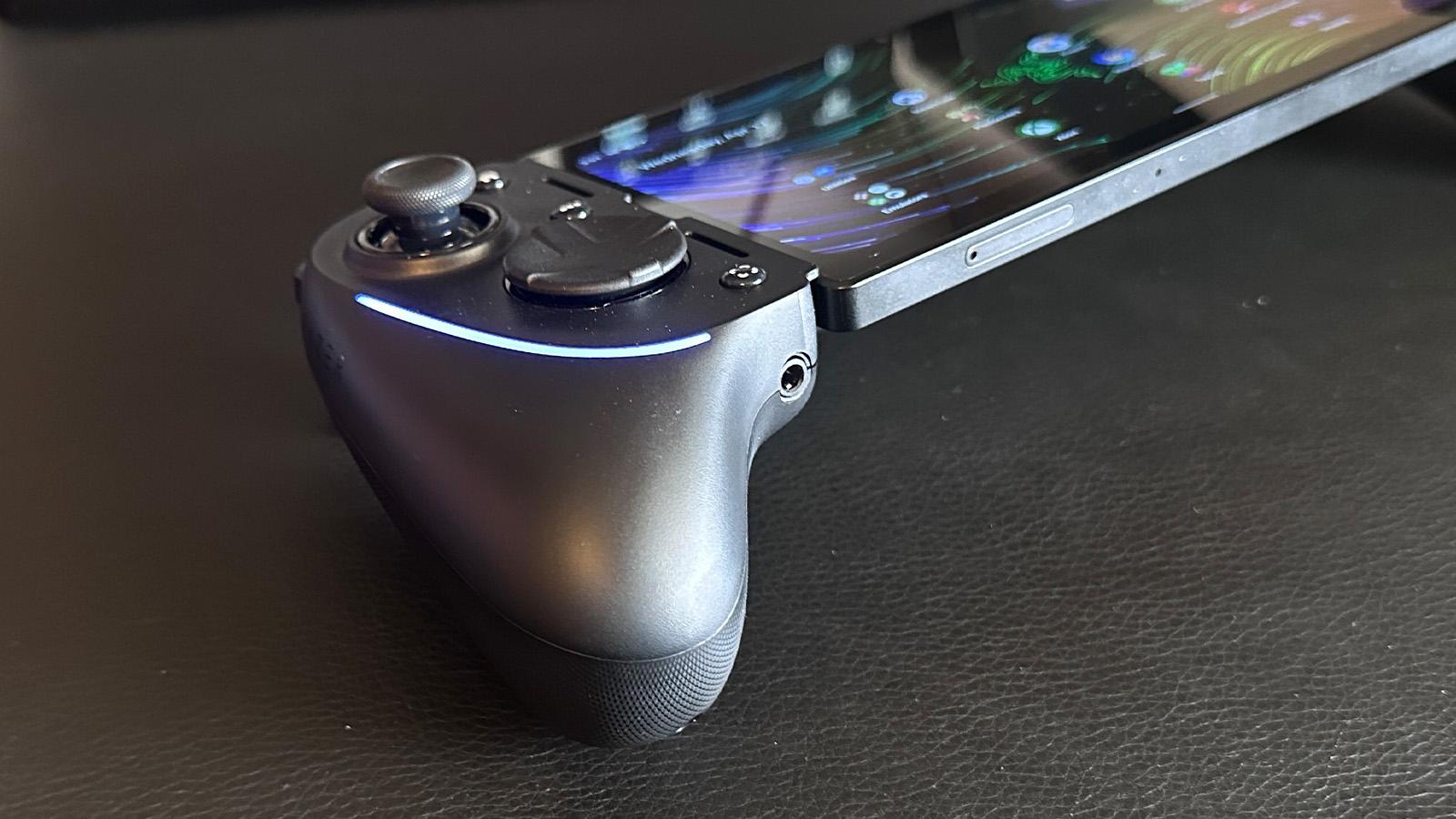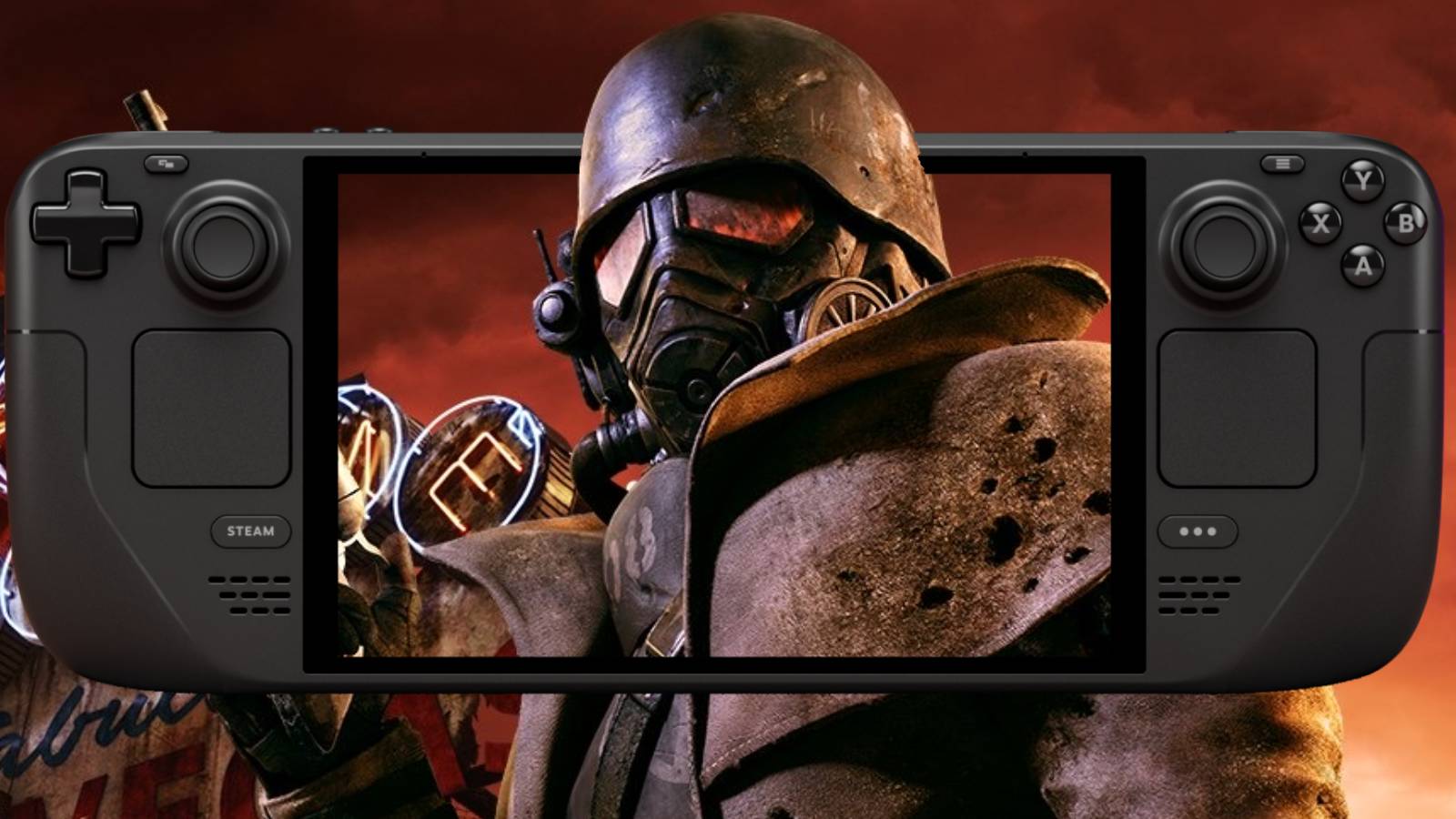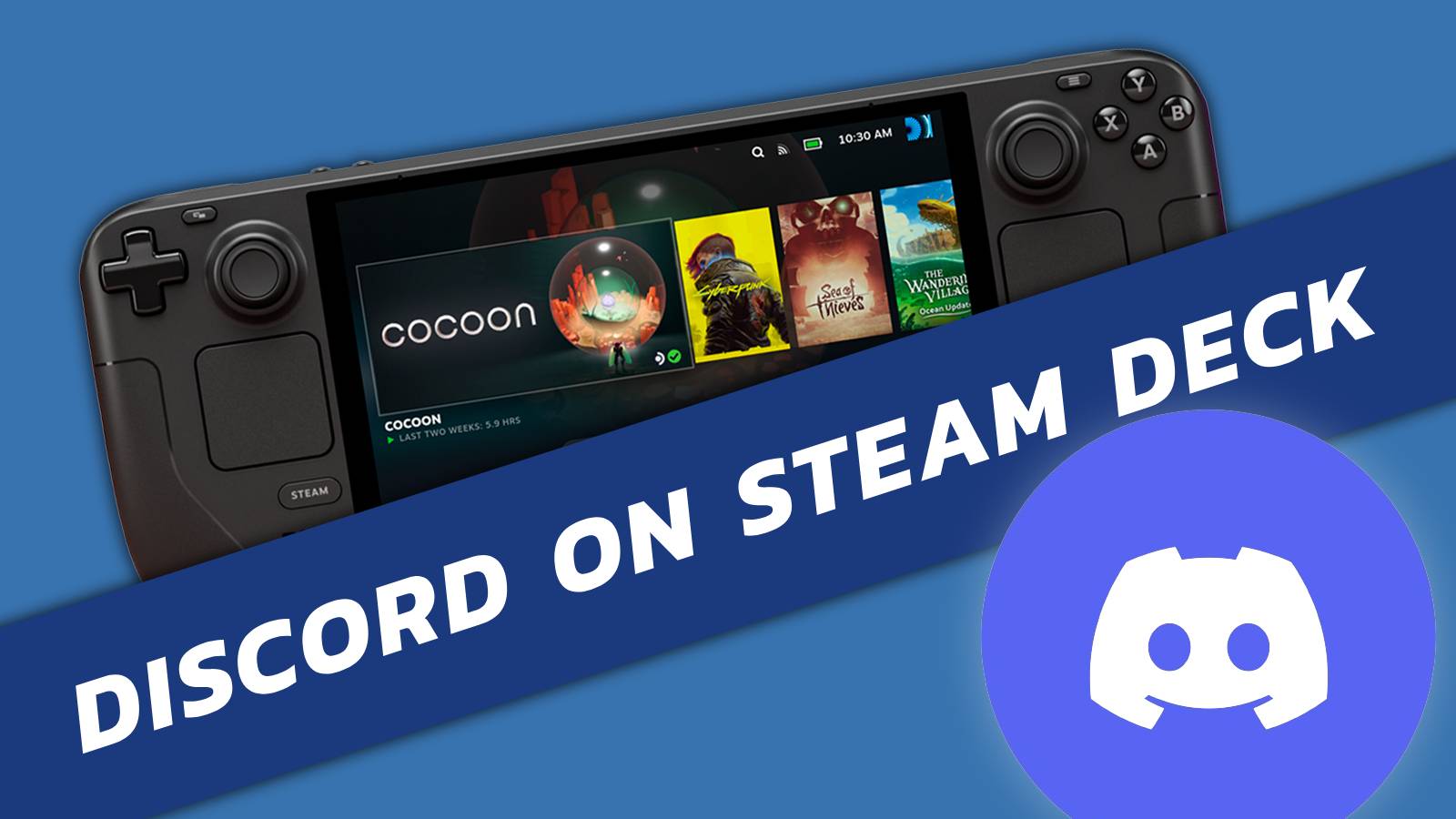Corsair Xeneon 27QHD240 review: Fantastic OLED gaming
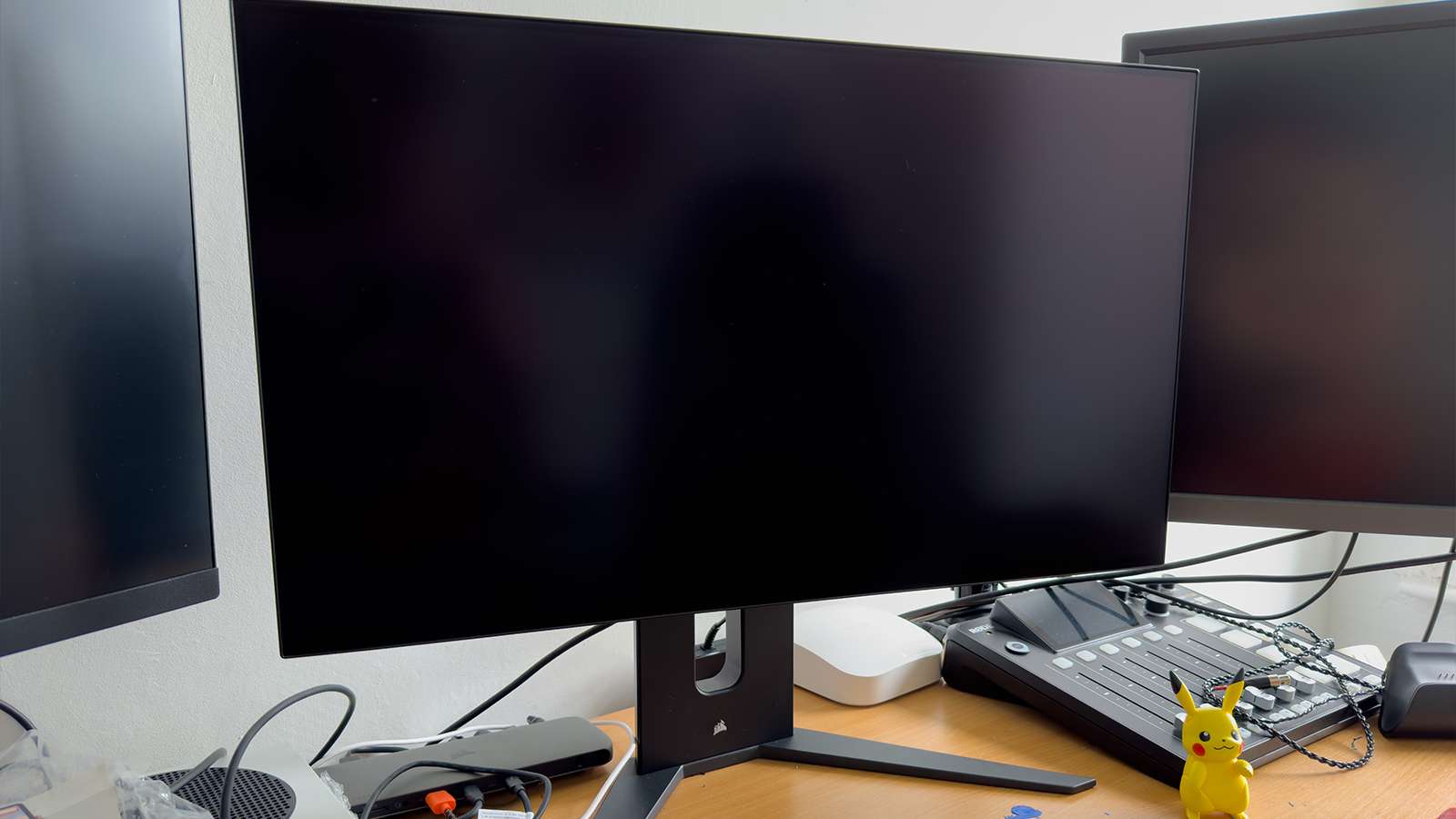 Dexerto
DexertoThe Corsair Xeneon 27QHD240 is the company’s latest stab at a high-end gaming monitor, and while it has no fancy gimmicks, it’s been a great companion through our testing.
Corsair hasn’t been in the monitor game all that long, but despite this, they’ve come out swinging. The latest monitor, the 27QHD240 from its Xeneon line, joins the ranks of some other excellent panels we’ve had through our doors in recent months.
It’s the little things that impressed us the most. While monitors seem to be in a stagnant position, coasting along while development happens behind the scenes, Corsair has seemingly spent this time actually considering user needs.
Key specs
- Screen size: 27-inches
- Panel type: OLED
- Resolution: 2560×1440
- Brightness: 1000 nits (peak)
- Contrast ratio: 1,500,000:1
- Refresh rate: 240Hz
- Response time: 0.03ms
- Color gamut: 100% Adobe RGB, 98.5% DCI-P3
- Connectivity: 2 x HDMI 2.1, 1x DisplayPort 1.4, 1x USB-C DP, USB-C Hub (4x USB 3.1 Gen 1, 65W power delivery)
- Price: $999
Design
Immediately after snapping the panel into place in one of the quickest setup times for a monitor, we saw just how pleasantly thin it is. The Xeneon takes up barely any room on a Z-axis, making it super easy to add to VESA-mounted setups or just push back against the wall while on its stand.
The stand is also not overtly in the way, so there’s no claiming desk space with spindly legs or a huge control panel. Outside of a review scenario, we’d absolutely have this on our VESA arms, just to add that little extra bit of flexibility when it comes to positioning. The current stand, while it supports some tilting, still feels a little limited.
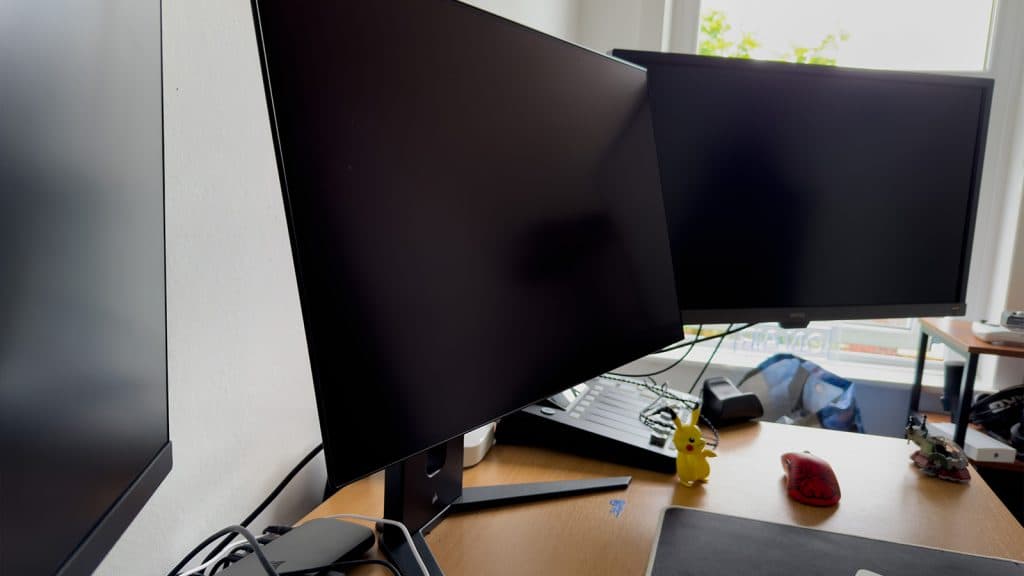 Dexerto
DexertoIts slender size is also highlighted by the 27-inch panel, which – despite playing ultra wide for the last couple of years – is slowly becoming a favorite form factor to play games on. Something about the compact nature, combined with its excellent quality makes for this great gaming experience.
Features
Before we talk about the screen itself, we want to draw attention to the I/O on the back. Not only is it robust, with four USB ports, HDMI 2.1, and DisplayPort, but the hub is connected to USB-C.
USB-C and I/O
For the last few years, even with the prominence of USB-C, monitor manufacturers have insisted on USB-B, adding yet another cable to the pile. It’s fine, but with the far more helpful C available it’s baffled us as to why it isn’t offered more.
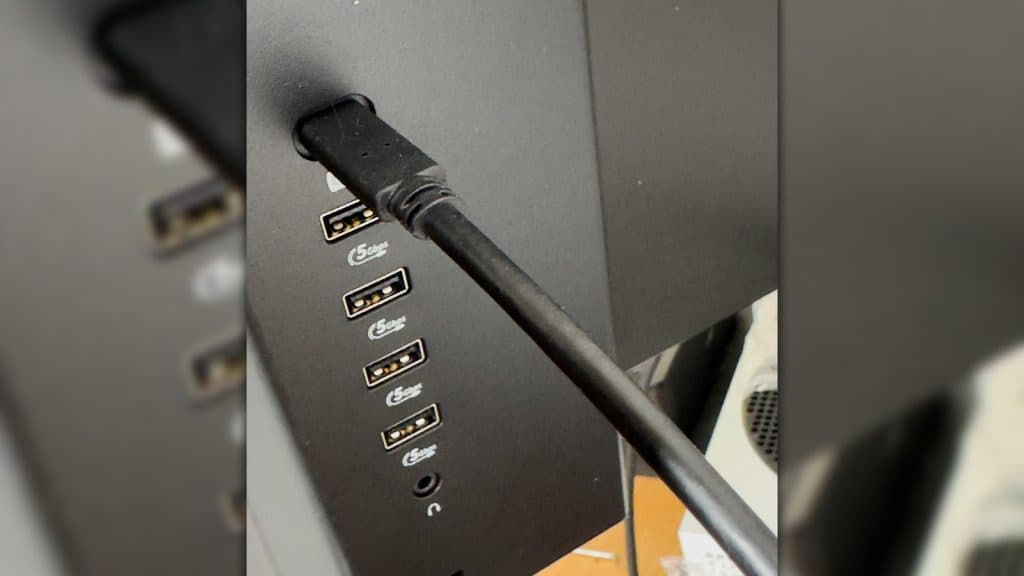
Here, everything from the display to the hub can be handled over the USB-C connection and it makes everything so much easier. Thankfully the correct type is included in the box, so there’s no rummaging around for a cable.
On modern GPUs, you can simply just plug it into the USB-C port intended for VR. We estimate we were up and running in about five minutes total from opening the box to loading it up.
Even though you can just use USB-C for everything, we went with the more traditional DisplayPort connection to ensure a typical performance.
Motion blur
As the monitor is using OLED, it helps eliminate motion blur, which can plague certain titles when running them at 240Hz. We played a series of titles and found that sure enough, motion blur when navigating menus, Windows, or playing games, motion blur was reduced to a normal state.
It’s incredibly helpful to have this onboard, but unless altered in the settings, movies, and videos can start to look a little off. This effect has been an issue since OLED and smart TVs were conceived, and it’s something that can in certain scenarios begin to ruin the whole experience.
Updates and using the monitor
During the review process, we were given new firmware, which was simply done by connecting the monitor over USB. Updating a monitor is still weird in 2023, but thankfully it’s a basic process here.
We also turned on the motion sensor for activating menus. After a fair shake, we found that it was just simpler to press the buttons underneath.
Corsair impresses with OLED technology
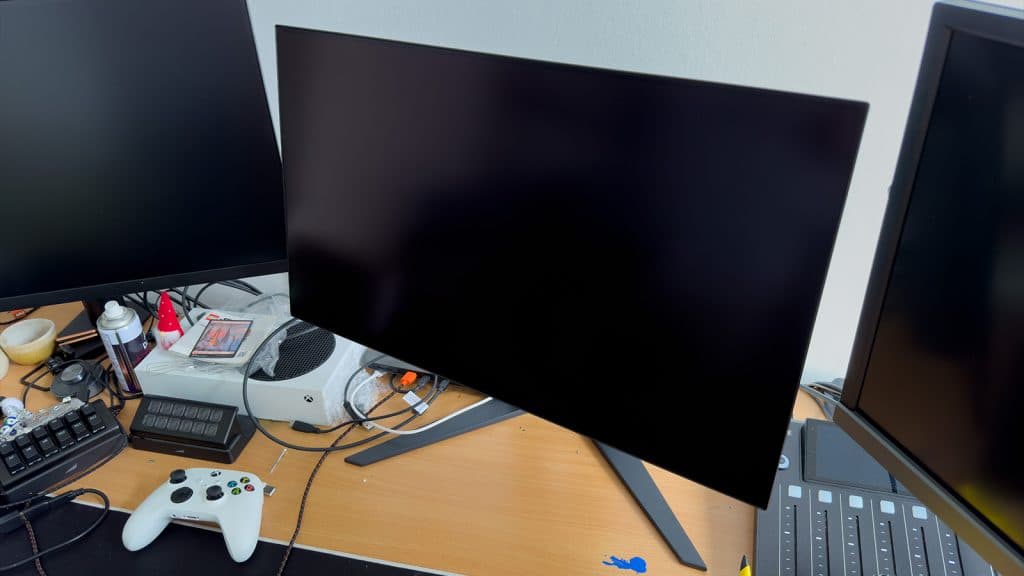
The panel itself is this lush OLED display. True blacks, deeper support for HDR. Seeing Windows boot up and shut down screens as they were intended is still wild.
Games and movies that have native HDR support have this solid vividness to them and other than some minor tweaks to the profile settings, felt like not much needs to be done to get that accurate image.
Of course, HDR on Windows isn’t without its own issues, but having checked the device across multiple platforms, including an Xbox, we’re confident that it functions just fine.
The monitor even comes with a sort of “dull mode” after inactivity on the screen. When reviewing Darkest Dungeon 2, we found that this came into effect during a hefty break in the session. It quickly lets up though, but doesn’t seem like it snaps back to its original brightness quickly enough.
Resolution & refresh rate
Coming in at 240Hz, it seems like Corsair is gunning for more than just prestige in gaming. This panel would have suited 144Hz and we’d still be relatively happy. However, in certain esports titles, we found it hugely effective.
The 240Hz might sound excessive, but we do feel like we had an edge while playing Apex Legends and Destiny 2. Something about how smooth things feel while at this refresh rate makes gaming on them otherworldly. How did we settle for just 60Hz for all those years?
There’s also motion blur reduction to ensure that there is very little ghosting on the panel itself, and it’s worth double-checking your settings to ensure that it’s not turned on in-game.
The resolution also pops at this size, which makes it a great middle-ground for gamers who still want to retain unparalleled image quality at a high resolution and speedy refresh rate.
Xeneon 27QHD240 Gaming performance
In titles like Resident Evil 4 Remake, Crysis Remastered, and Cyberpunk 2077, it really showed its true colors. The depths of the castle in RE4 were enhanced by its true blacks and deeper colors from the OLED. It also helps that the refresh rate made us feel like a god among the parasites during RE4’s shooting ranges.
Cyberpunk’s carnival mission filled with neon and a mixture of areas popped vividly, engrossing us further.
Crysis never looks better than when on OLED either. Those early beach encounters and the shift from day to night consistently impressed me with each sneaky step.
Seeing the sharp contrast between the two scenarios and just how well the Xeneon OLED can handle it is still an impressive feat, even though we’ve been using OLED displays for years.
Content creation
Despite having a high color accuracy in the Adobe space, and key accuracy in the DCI-P3 color gamut, we’d still err on the side of caution when working in content creation.
Even with its excellent OLED panel, results from editing projects wound up too dark. With the brightness overlayed on top of the software and no way to see the “true” image, DaVinci Resolve and Capture One never came out with accurate images the first time around.
However, the true 10-bit color does assist when using Studio drivers, but for the most part, we still had to double-check on other monitors to see where we were in terms of brightness.
Is it too expensive?
All this comes to a head when you acknowledge the price. Coming in at $999, putting it at a price range similar to an OLED TV, makes it feel like an incredibly premium device.
Corsair can’t escape that, it’s the cost of doing business in this particular segment. However, for a 27-inch monitor (as much as we enjoy the form factor), it’s a weighty question to ask a consumer to consider spending.
For esports, most don’t need the OLED tech, instead, something speedier might suit. For regular PC gaming, OLED is fantastic, but we do worry about burn-in issues over time.
It’s a tough spot for those producing OLED monitors like Corsair, there is a premium appeal, and the device is just as solid. If you’ve got cash to burn, this is a good fire to put it in.
Verdict – 4/5
The 27QHD240 is an excellent, if pricey monitor that routinely impressed us throughout our time with it. The OLED panel makes some games better than an IPS screen, and Corsair should be applauded for its connectivity options. The OLED technology manages to impress, and we think that if you are in the market for an OLED monitor, this should be a serious contender.
If you click on a product link on this page we may earn a small affiliate commission.
